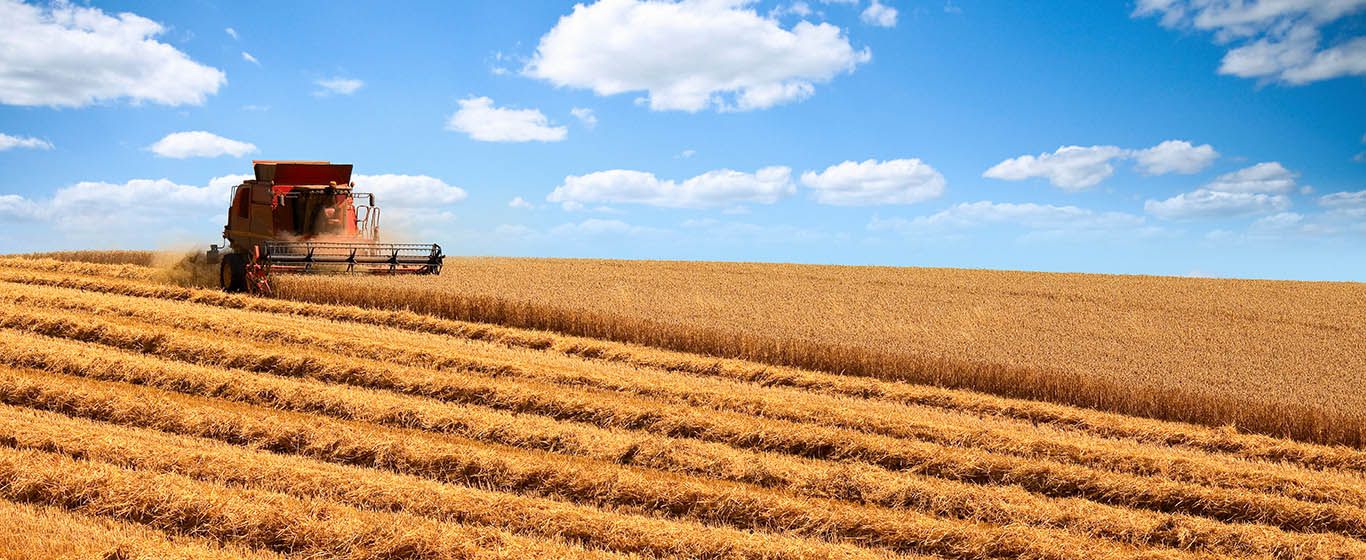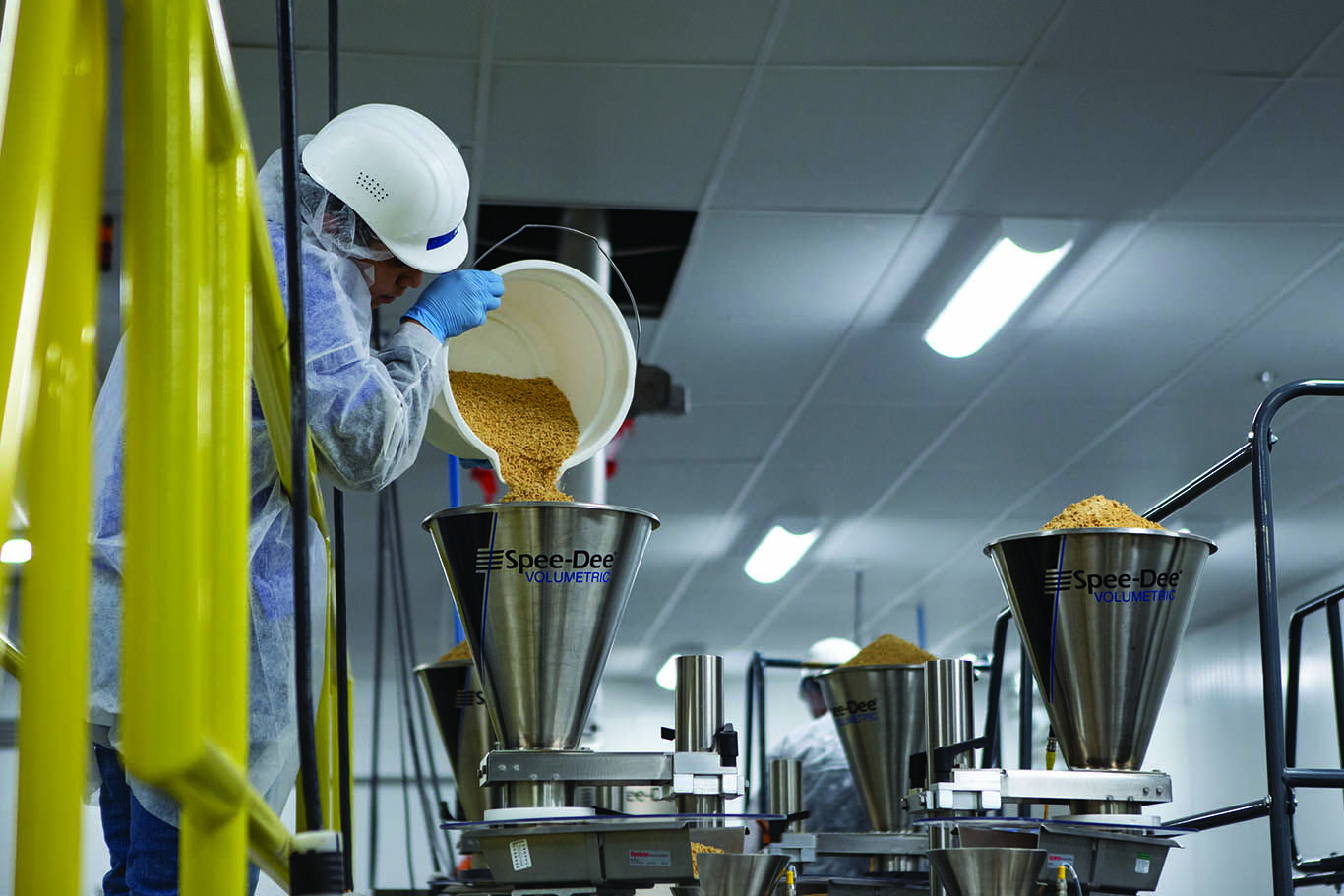From Wheat to Flour--A Kitchen Staple
Author
Published
4/1/2020
Remember the childhood story “The Little Red Hen”? Little Red Hen found a grain of wheat and asked who will help me plant this? “Not I,” was the response from all her barnyard friends. So, she buried the wheat in the ground and after a while it grew up yellow and ripe. Little Red Hen approached her friends again, “The wheat is ripe now. Who will cut and thresh it?” “Not I,” was, once again, the response. “Then I will,” said Little Red Hen. Little Red Hen then mills the wheat and makes the bread. She had the big picture of where her food started, how much work it was to grow the wheat, process the wheat and then turn it into a delicious loaf of bread to feed her family.

Because most Americans don’t have the opportunity to see the process of how our food gets from the farm to our plates, we may lack both the understanding and appreciation for those people who do help get our food from the fields to our dinner tables.
Utah grain farmers grow the wheat that Honeyville, Inc., a local mill company, turns into a variety of amazing products and mixes that can be found on the dinner tables of Utah families.
Utah farmers grow wheat and other grains. Winter wheat is planted in the fall, usually September, and grows to about three inches tall and then goes dormant in winter. The whole plant freezes and it must in order to develop the head – which is where the individual grains of wheat are held. The wheat grows through the spring and summer and is typically harvested in August. Each active acre can produce between 40 to 60 bushels – a bushel is roughly 62 pounds of wheat).
Wheat is green and as it grows to maturity, it turns to a beautiful color of amber yellow. Combines are used to harvest the wheat. The combine derives its name from combining three separate harvesting operations—reaping, threshing, and winnowing—into a single process. Reaping is cutting the wheat stock. Threshing is the process of loosening the edible part of grain from the husks and straw. Winnowing separates the grain from the chaff. One farmer, working alone, can harvest about 80 acres in a day because of the new technology used in combines. Some combines costs tens of thousands of dollars and can use up to $500 of gas a day. Once the wheat is harvested it is then shipped to mills for processing.
Roughly 30 Utah farmers produce grain sold to Honeyville Grain, a milling company in northern Utah. Kari Pierson, Food Safety & Quality Assurance Director, explains the standards to which farmers must comply to sell grains to Honeyville. Farmers must demonstrate to Honeyville that the harvest equipment is clean and in good repair, that grains are transported in clean transports and trailers, storage facilities are clean, in good repair and are secure, and that pesticides and herbicides are applied following all federal, state and local regulations, just to name a few. These standards help ensure food safety and quality. Quality technicians sample and inspect each load of grain prior to unloading at Honeyville.

How does Wheat Become Flour?
Flour is the grounded berry or seed of the wheat. Wheat is the most common grain ground into flour in the United States, but Honeyville also offers a variety of other flours including almond flour.
Wheat flour is made by taking the wheat berry, removing the bran or outer shell and grinding the seed into a flour-like consistency. This type of flour is called refined or white flour. Whole wheat flour is made by grinding all of the whole wheat berry, including the bran and seed. Although this is a healthier option, because it has fatty acids, it also spoils quicker than white flour.
Bread flour is made from winter wheat which is rich in protein due to winter wheat's long growing cycle and exposure to winter temperatures. Hard-crust breads, decorative breads, and pasta are often made from this strong flour.
All-purpose flour is made from a blend of winter wheat (high protein) and spring wheat (lower protein) flours. It has a medium protein content which makes it suitable for baking a variety of things like cookies, rolls, and pizza dough. All-purpose flours typically produce the optimal result as they are designed to work with predictable results for a range of baked goods.
Rising Trend of Cooking & Baking at Home
In the past decade there has been a rising trend of cooking and baking at home. This creative outlet has been boosted by a wide variety of food shows, blogs, and easily accessible recipes on the internet.
A study in the International Journal of Humanities and Social Science looked at the therapeutic qualities of cooking as a hobby, including its reported ability to cause a dimmed sense of time and an altered sense of consciousness. The researchers found that the act of cooking improves a person’s well-being and is associated with life satisfaction.
Spending time in the kitchen can ease stress, allow quality time with children as you teach them an essential skill, create family food traditions, and bring comfort and familiarity during difficult times. There is a real sense of achievement when you create something tangible that everyone can enjoy.
"Using kitchen staples to make good food has become something of a trend in the past few weeks," said Hannah Haslam, food enthusiast and food contributor for Utah Farm Bureau. "If you have flour, salt, yeast and water, you can make a beautiful loaf of No Knead artisan bread. With flour as a main staple, the possibilities are endless. Now is as good a time as any to go into the kitchen and start baking.
Want more news on this topic? Farm Bureau members may subscribe for a free email news service, featuring the farm and rural topics that interest them most!
